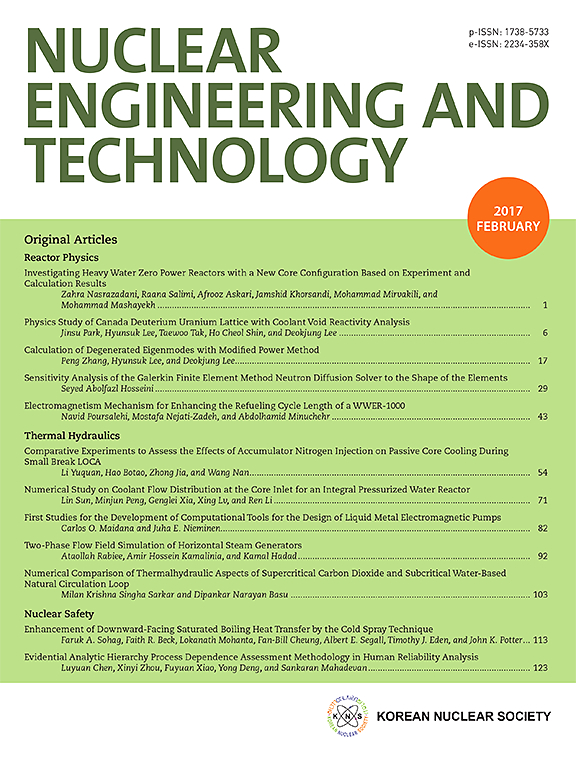提高有机闪烁体探测器标定方法精度的研究
IF 2.6
3区 工程技术
Q1 NUCLEAR SCIENCE & TECHNOLOGY
引用次数: 0
摘要
响应矩阵的标定精度对有机闪烁中子光谱仪展开光谱的精度和稳定性有着至关重要的影响。本文在对EJ-301型液体闪烁探测器进行标定的基础上,提出了几种优化方法以提高标定精度。在伽玛定标中,采用蒙特卡罗模拟方法研究了不同符合分量对符合谱峰能的影响,并采用设计良好的迭代比较法修正了传统方法中将符合谱视为单能电子峰所带来的误差;研究了电子响应非线性对蒙特卡罗迭代定标方法的影响,进一步提高了定标精度,将对4.438 MeV γ射线响应的相对偏差从3.31%降低到0.61%。在低计数条件下,利用电离猝灭模型优化了基于同位素中子源和飞行时间技术的中子定标方法。最后,利用DT中子发生器对标定效果进行了验证,结果表明本文方法能显著提高标定精度。本文章由计算机程序翻译,如有差异,请以英文原文为准。
Accuracy improving research on the calibration methods of organic scintillator detectors
The calibration accuracy of the response matrix has a critical effect on the accuracy and stability of the unfolded spectra of organic scintillator neutron spectrometers. In this paper, based on the calibration of an EJ-301 liquid scintillation detector, several optimization methods were proposed to improve the calibration accuracy. For gamma calibration, the influence of different coincidence components on the peak energies of the coincidence spectra was studied using Monte Carlo simulation, and the errors introduced by treating coincidence spectra as peaks of monoenergetic electrons in traditional methods were corrected by a well-designed iterative comparison method; the effect of electronic response nonlinearity on the Monte Carlo iterative calibration method was studied and then taken into account to further improve the calibration accuracy, reducing the relative deviation of the response to 4.438 MeV γ-rays from 3.31 % to 0.61 %. For neutron calibration, the calibration method based on isotope neutron sources and the time-of-flight technique was optimized under low-count conditions using an ionization quenching model. Finally, the calibration effect was validated using a DT neutron generator, and the results demonstrated that the methods proposed in this paper can significantly improve the calibration accuracy.
求助全文
通过发布文献求助,成功后即可免费获取论文全文。
去求助
来源期刊

Nuclear Engineering and Technology
工程技术-核科学技术
CiteScore
4.80
自引率
7.40%
发文量
431
审稿时长
3.5 months
期刊介绍:
Nuclear Engineering and Technology (NET), an international journal of the Korean Nuclear Society (KNS), publishes peer-reviewed papers on original research, ideas and developments in all areas of the field of nuclear science and technology. NET bimonthly publishes original articles, reviews, and technical notes. The journal is listed in the Science Citation Index Expanded (SCIE) of Thomson Reuters.
NET covers all fields for peaceful utilization of nuclear energy and radiation as follows:
1) Reactor Physics
2) Thermal Hydraulics
3) Nuclear Safety
4) Nuclear I&C
5) Nuclear Physics, Fusion, and Laser Technology
6) Nuclear Fuel Cycle and Radioactive Waste Management
7) Nuclear Fuel and Reactor Materials
8) Radiation Application
9) Radiation Protection
10) Nuclear Structural Analysis and Plant Management & Maintenance
11) Nuclear Policy, Economics, and Human Resource Development
 求助内容:
求助内容: 应助结果提醒方式:
应助结果提醒方式:


